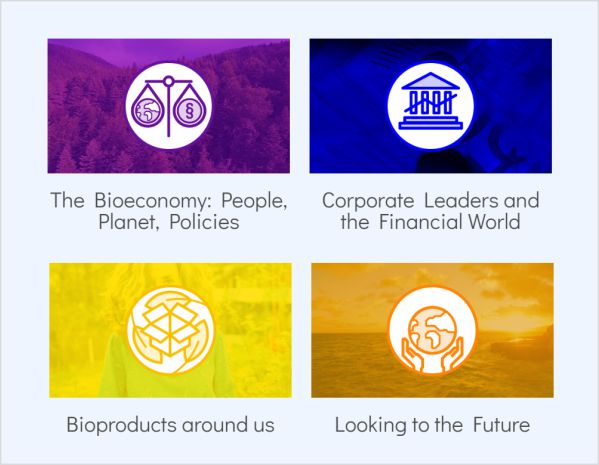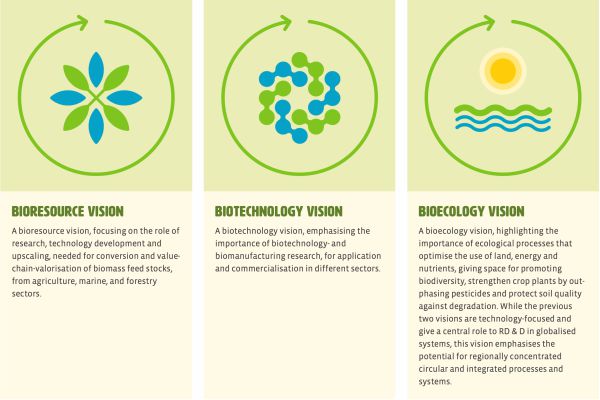Global platform for discussions on circular bioeconomy, the World BioEconomy Forum, has called the pulp and paper industry as being ‘well-aligned’ with bioeconomy and one of the most sustainable industries currently, while noting that countries such as India, China and the USA were keen on having biotechnology in the industry. This was revealed by Jukka Kantola, Founder and CEO of World BioEconomy Forum, during an interaction with Paper Mart.

Paper Mart: Please tell us about the organisational setup of the World BioEconomy Forum, its core principles, and its mission.
Jukka Kantola: The World BioEconomy Forum functions as a pivotal global platform, uniting stakeholders for in-depth discussions on the circular bioeconomy. Established in 2018, the Forum has undergone significant evolution, hosting events in various pivotal locations related to the bioeconomy.
Guided by a Four-Pillar Structure encompassing I) The Bioeconomy: People, Planet, Policies, II) Corporate Leaders, III) Bioproducts around us, and IV) Looking to the Future, the Forum takes a comprehensive approach. By engaging diverse bioeconomy stakeholders in meaningful roundtable discussions and an annual conference, it actively contributes to shaping annual declarations and influences the progress of the circular bioeconomy.
The Advisory Board, composed of experts from all continents, ensures that the Forum maintains high standards of content and fosters insightful dialogue. With a diverse target audience, including policymakers, bio-related industries, associations, and institutes, the Forum is dedicated to fostering collaboration and sustainability.
PM: Kindly share details about the Four-Pillar Structure of your esteemed organisation.
JK: We at WBEF have developed a new tool to explain the status of bioeconomy and help you derive a strategy to tap into this rapidly growing sector. The new tool is comparable to swot analysis. A company should first have a swot analysis to understand the business or any other environment and only after that, it can contemplate a strategy. We are not necessarily using this swot analysis in bioeconomy, but we use it for the purpose of the 4P structure of bioeconomy. With this 4P structure, you are able to form your position in the bioeconomy where you operate. It helps you to derive a strategy.
The World BioEconomy Forum organises its activities and events based on the Four-Pillar Structure:
I. The Bioeconomy: People, Planet, Policies
II. Corporate Leaders and the Financial World
III. Bioproducts Around Us
IV. Looking to the Future

The first pillar deals with the regulatory legislation and framework of the sector to build up on future aspects. The second pillar engages the business world. Within this, we analyse the business opportunities related to bioeconomy in the sector. The third pillar is related to market specifications, standards, norms and methods affecting your operations in this sector. The fourth pillar clubs together all previous pillars into associated matters for review. It focuses on the kind of skills, resources and capacities needed to keep up your position in bioeconomy.
Once you know your positioning in the bioeconomy sector with the 4P structure, you are better equipped to derive our strategy and action plan, whether you are a company, a public organisation or any other entity, the 4P Structure is exactly the tool you are looking for to arrange your actions in bioeconomy. It works for all, whether you are a major organisation, or a start-up.
This structured framework facilitates a comprehensive assessment of the circular bioeconomy, thereby fostering advancements across the entire sector. The Forum’s commitment to this Four-Pillar Structure empowers its initiatives, ensuring a holistic approach to the bioeconomy and fostering impactful collective endeavours in climate change mitigation.
All Forum programs and activities, including roundtables and the annual declaration, adhere to the Four-Pillar Structure. This strategic framework guarantees that every pertinent stakeholder in the circular bioeconomy is provided with a voice and a platform.
Watch: Top Paper Companies 2023
PM: How do you intend to make the WBEF a dynamic, go-to hub for global stakeholders in a circular bioeconomy?
JK: We have already launched the World Bioeconomy Association to serve the purpose.
The World Bioeconomy Association was officially launched on December 12, 2023 during the World BioEconomy Forum in Washington D.C. This association, headquartered in Finland, boasts of a global presence through its extensive network and Ambassadors.
The establishment of the non-profit association, the World Bioeconomy Association, can be attributed to both external and internal factors.
External reasons include the increasing significance of the bioeconomy, especially since 2022. Notably, there has been a surge in the development of bioeconomy strategies, with the bioeconomy offering solutions to global challenges, a progressing Biorevolution, and a developing value proposition.
In alignment with this trend, the World BioEconomy Forum designated its theme as “Creating a global hub for the bioeconomy.” To gather insights, a digital survey titled “A global hub for the bioeconomy” was conducted, which sought advice from bioeconomy stakeholders on topics such as international discussions on the bioeconomy, organisational formats for a potential hub, and financing strategies. Results from the survey indicated a clear majority favouring a hub built on a partnership between governmental and non-governmental organisations.
Internally, the World BioEconomy Forum, operating since 2018, has engaged numerous top-level speakers, panellists, and thousands of participants in bioeconomy discussions, concluding each season with an annual declaration.
Originally a private initiative, the Forum’s role evolved, generating increased interest in public bioeconomy discourse. The Forum introduced Circle programs earlier, which bore similarities to advocacy activities.
In the summer of 2023, Circle stakeholders initiated internal discussions on restructuring Circle activities, leading to the realisation that these activities could be better served by an independent non-profit association. In the latter half of 2023, intensive discussions with Circle stakeholders, including the formulation of Articles of the Association and a strategic plan, took place.
Towards the end of 2023, the decision to replace Circle activities with the World Bioeconomy Association was announced, and the association was officially registered on December 12, 2023.
The World Bioeconomy Association addresses the growing need for a global hub dedicated to enhancing and advocating for bioeconomy. It unites the global bioeconomy community to foster sustainable economic growth and advance the transition to a bioeconomy. It encompasses a comprehensive range of perspectives, fostering knowledge building and business opportunities that align with the principles of a sustainable bioeconomy.
Our partners and members include a diverse range of stakeholders, public organisations, business leaders, academics, government officials, NGOs, or other civil society representatives, all committed to pursuing progress in the bioeconomy.
PM: Why is it important for industries to adopt eco-friendly measures for their growth and development?
JK: It will be the next paradigm shift and we cannot keep on living above our planetary boundaries. Bioeconomy is providing sustainable and renewable solutions for the mankind. This will speed up green transition and reduce dependence on fossil-based alternatives, which is the necessity to mitigate climate change. Besides mitigating climate change, bioeconomy is providing solutions for other challenges of the mankind, like health care, food security or environmental problems related to micro-plastics.

PM: Please share information about Biorevolution and its influence on the pulp and paper industry.
JK: Biorevolution is emerging. It has emerged as one of the major avenues for the bioeconomy given that it is not the only, but important thought. In our thinking, one needs to balance between various aspects of the Bioeconomy.
Biotechnology is living its renaissance, as today development work of it is accelerated via digital tools like AI, automatisation and big data. This brings totally new avenues for development and that’s why countries like the USA, China and India have been very keen on it. Now, G20 is also working on it.
At the same time, the world is sifting from globalisation – at least temporary – towards localization, which brings more emphasis on supply chain resilience. This will mean that local solutions are looked after. The pulp and paper industry cannot avoid this, though major pulp producers are few. Circularity and local solutions will also play a role and bring some pressure to seek solutions for local markets. Bio-revolution will bring new tools also for that area.
Also Read: Paper Industry OutlinesEnergy and Environment Roadmap
PM: Please suggest sustainable measures for the industries in general, the pulp and paper industry in particular, to move towards a greener future.
JK: In general, one needs to have its value chains holistically starting from the feedstock down to customers and related processes. Applying sustainable measures along the value chains, but with side streams will accelerate green transition. The pulp and paper industry is pretty well-positioned on these in comparison to several other industries.
PM: How has the paper industry responded to your call to make efforts towards bioeconomy?
JK: Bio-based economy is a multisectoral concept, which can be defined as an economic activity involving the use of biomass and biotechnology in the production of goods, services or energy.
Now, having a look at the paper industry. I think it is well positioned in the bioeconomy due several exciting reasons – it is already operating based on sustainable and renewable bioresources, and in most of the cases, material efficiency is high due to high recycling rates.
On top of that, the paper industry is experienced in biological feedstock, which makes it well positioned for the future also. So, the paper industry is already a vital part of the bioeconomy and I’m convinced that a successful approach on new innovation will enable it to create new types of bio-based products in the future as well.



